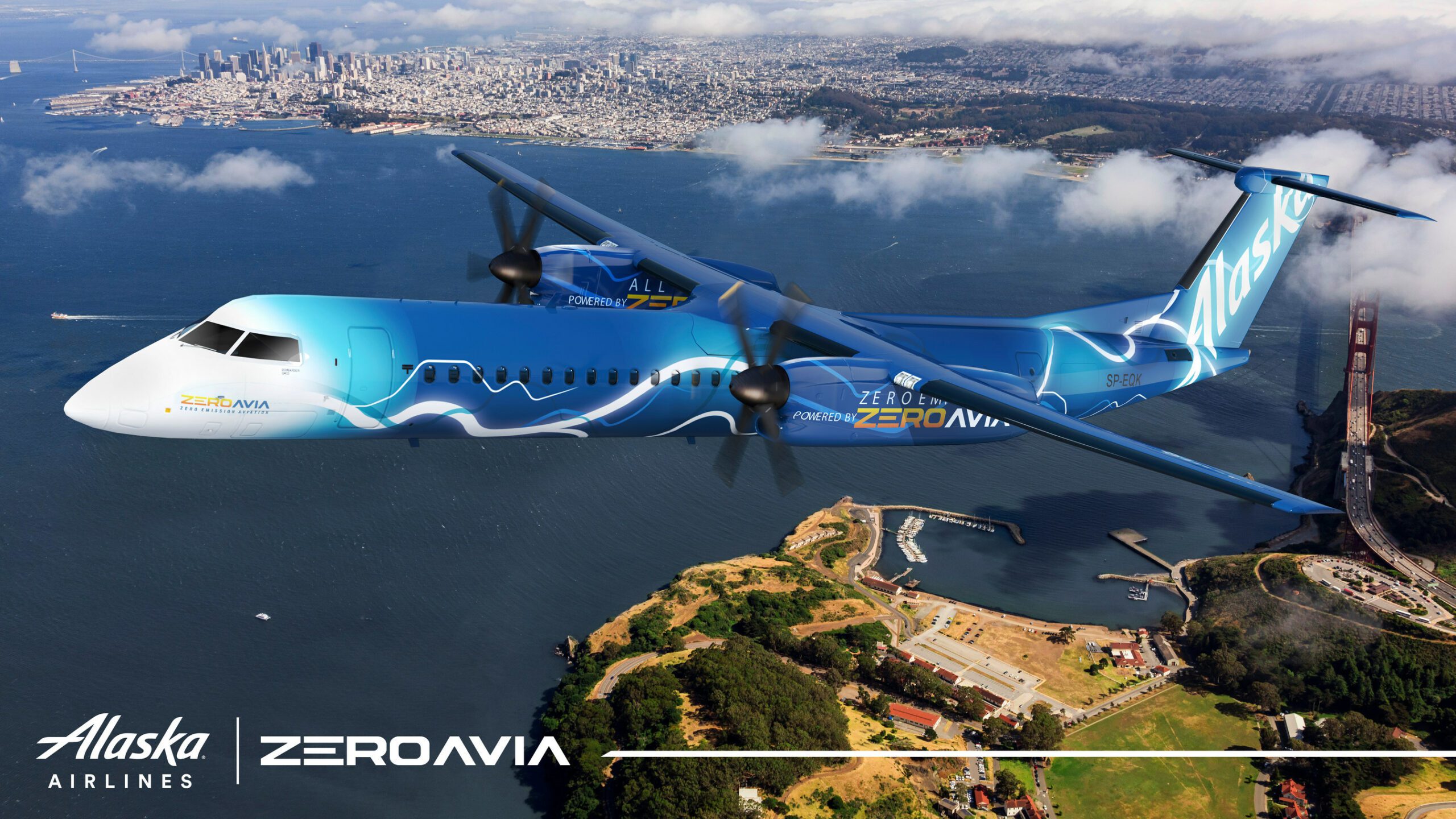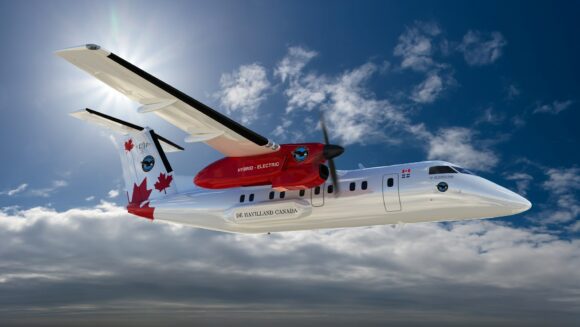
ZA Alaska Airlines Image scaled
Yesterday there was an interesting announcement about Alaska Airlines modifying one of its Dash8s to add a hydrogen-electric powertrain. The new engine can produce between 2,000 and 5,000 KW. That translates into between 2,600 and 6,700 Hp. Alaska Airways also becomes an investor in ZeroAvia.
The projection is that this aircraft would have a range of 500NM. This compares to the regular Dash8-400’s range of 1,100 NM. Essentially the project replaces a 5,000hp/3,781Kw powerplant with an equivalent hybrid. But the aircraft loses 50% of its range. This may seem to be a big “give”, but data from the US DoT shows the typical Dash8 ranges used are in the 300-mile range.
Meanwhile, this project is another that will utilize the Dash8. Universal Hydrogen is also doing this and a third is Pratt & Whitney Canada using a Dash8-100.
Alaska says they have a deal to acquire 50 kits for their Dash8-400 fleet. ZeroAvia says it will set up a location in the Seattle area to support the project. This zero-emission aviation rollout, the PR states, will be supported by the ground fuel production and dispensing infrastructure from ZeroAvia and its infrastructure partners, such as Shell.
ZeroAvia has ground-tested its 600kW powertrain capable of powering an aircraft with 10-20 seats flying 500 miles. ZeroAvia claims it is “well advanced in preparing a 19-seat aircraft for flight testing” at Cotswold Airport and is moving to full-size prototype manufacturing of its 2,000-kW engine for demonstrations in 2022.
So far so good, right? But there are two unmentioned elephants in the room, namely De Havilland Canada (DHC) the aircraft OEM, and Pratt & Whitney Canada (P&WC) the engine OEM. ZeroAvia says it will work closely with aircraft regulators during this project to ensure the aircraft meets both safety and operational requirements. How much of this effort can be undertaken without cooperation from DHC and P&WC?
These items should give people in commercial aerospace pause. The proposed project does not have two OEMs on board. ZeroAvia also announced this week its efforts to power regional jets in collaboration with Mitsubishi. So ZeroAvia is on a tear and this announcement includes the OEM.
Lots of questions. We have asked for input from the parties.
Views: 1





